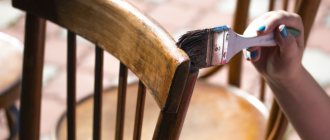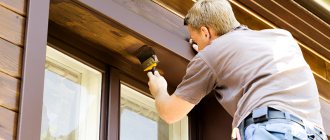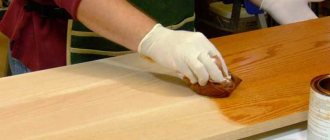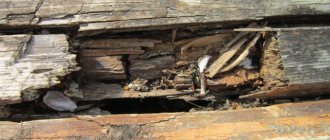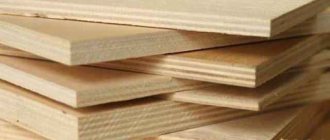Odorless paint is an excellent choice for interior finishing work. Painting walls and ceilings is an important part of apartment renovation work. That is why it is recommended to use only harmless materials that dry quickly enough and do not have an unpleasant odor.
It is noteworthy that modern technologies make it possible to obtain completely safe paint that is easy to use (when carrying out renovation work indoors, it is important that nothing stinks).
What compositions are quick-drying?
The time until the surface dries completely depends on the composition of the material, as well as the temperature conditions in the room. The most common quick-drying paints are:
1) Nitro paints. The drying time of the first layer when sprayed from an aerosol can is no more than half an hour, the subsequent layer takes twice as long to dry. In the liquid version, nitro paints dry more slowly, taking several hours. Disadvantages - they have a sharp toxic evaporation and an unpleasant aroma.
When working with this material, you must strictly observe safety precautions.
2) Acrylic. The first layer dries in 4 hours. Advantages – does not have a strong aroma, safety and moisture resistance.
3) Water based. Drying time for the first layer is half an hour. Advantages: odorless and non-toxic.
4) Latex. Dries in 60 minutes. Advantages: odorless, safe and moisture resistant.
| Time for 1 layer | Toxicity | Smell | Moisture resistance | |
| Nitro paints | 30 minutes | + | + | – |
| Acrylic | 4 hours | – | – | + |
| Water based | 30 minutes | – | – | – |
| Latex | 60 minutes | – | – | + |
How to choose odorless paint for interior work
It would not be correct to say that the mixtures do not smell at all, but if the hardened films do not smell at all when dry, paintwork materials are suitable for interior decoration. Water-soluble compositions with acrylic polymer components, unlike alkyd paints, do not have a pronounced solvent odor. For reference: the smell of paint is determined by a test method: a thin layer of the composition is applied to a ceramic tile heated to 60°C. Acrylic paints also smell during the test; latex paints do not emit volatile esters.
When purchasing, look at the labeling; most mixtures are produced for specific surfaces: metal, wood, concrete. Heat-resistant paints for radiators are available for sale. Attention should be paid:
- Mixture category: glossy, matte or semi-matte or semi-gloss.
- Resistance to high humidity; for the bath and kitchen it is better to choose moisture-resistant compounds.
- For flooring, abrasion-resistant components are added to the mixture.
- Degree of whiteness; especially white enamel is produced for radiators, which does not turn yellow from ultraviolet radiation during operation.
- Drying speed, quick-drying ones partially harden or dry within 2 to 4 hours depending on the ambient temperature (the drier and hotter, the faster the coating dries).
When purchasing paint, it is advisable to choose cans from the same batch; the number is indicated on the label.
When purchasing, look at the labeling; most mixtures are produced for specific surfaces: metal, wood, concrete.
Without smell
Odorless paints and varnishes include those types that do not have toxic fumes and are therefore safe.
The following varieties are distinguished: 1) Water-based (water-dispersed). The base is water, so there is no strong aroma, and it dries quickly.
2) Acrylic. It is odorless, non-toxic and dries quickly.
3) Latex. It is an improved water-dispersion version. The latex base dries quickly, the treated surface has increased moisture and wear resistance.
General information
Man is designed in such a way that even fresh, interesting and modern renovations become boring over time, and one wants change. The easiest way to change something in the interior is to repaint the walls. Of course, this task is much easier to accomplish if you have already prepared the walls for painting before.
All you have to do is buy a can of paint in the shade you like and start painting. The main thing in this matter is to choose a paint with a good composition that does not emit foul odors or toxic fumes. Many modern paints do not smell of anything and have an excellent safe composition. In addition, you can cope with such work quite independently.
Types of odorless interior paints
Among the many brands and options of finishing paints that are presented in specialized stores, it is easy to get confused. The question arises - how to choose the most suitable paint for your walls, and the safest? To decide, we advise you to study the composition and properties of the most popular paints or consult specialists.
So, there are such types of safe paints as:
acrylic;- oil;
- latex;
- water-dispersed.
Each type has its own advantages and disadvantages, respectively, each is good in its own way, but for individual surfaces.
How to apply the coating correctly
First of all, it is necessary to carry out preliminary preparation of the walls - clean off the old coating and degrease.
Before painting, the surface is covered with primer. This will help avoid problems during application and subsequent operation. Apply the coating in a thin layer, then wait until it dries completely. A second application will help even out the color and achieve a better result.
You cannot apply a second layer before the first one has completely dried, this will slow down the overall drying time and negatively affect the durability of the coating.
Water-dispersed
An excellent option for treating walls and ceilings are water-dispersed painting materials. They are water-based and therefore completely safe. They consist of a dispersion - special particles that are not harmful and are dissolved in a natural solvent - water. Water-dispersed white odorless paint has no unpleasant odor, dries quickly, and looks great on the surface. It has a water-repellent effect, which allows the painted surface to be washed in the future without fear of damaging the coating.
Due to the fact that such materials are absolutely harmless, they are suitable for decorating children's rooms, schools and kindergartens. The color range is not very diverse, mostly water-dispersion paint for odorless radiators is white, although with the help of special additives they can be given different shades. The result is an odorless children's room paint with light, airy shades that are pleasing to the eye. Water-based materials are the safest and most environmentally friendly. What’s especially nice is that it’s easy to wash a dirty hand or tool and you don’t need to use toxic solvents for this, but can be washed with plain water.
Attention! It is not recommended to use water-dispersion paint for heating pipes when painting wooden surfaces, metals, and doors.
Tools for work
For painting you will need:
1) Brushes for painting hard-to-reach areas.
2) Roller for painting large surfaces.
3) Spray bottle for painting large areas.
4) A roller with a bendable plate, which allows you to separate the area that should not get dirty. Used at the junctions of ceilings and walls.
Among the entire range of paints and varnishes, only three types fully meet the “odorless” and quick-drying characteristics. These are acrylic, latex and water-based paints. Also, such coatings are non-toxic and safe to use, and acrylic and latex coatings can be used in rooms with high humidity.
Odorless paints for interior work - what are their features
The main difference between most compositions is moisture resistance. The second indicator is a wide color palette; you can tint the white mixture in any shade. Manufacturers offer a variety of paints and varnishes for finishing any materials, including wallpaper for painting, steel metal with traces of rust, lining, chipboard.
All paintwork materials are durable and do not fade. Fire safety is considered an important criterion. These are non-flammable coatings, intumescent ones are marked in a special way.
The main difference between most compositions is moisture resistance.
Advantages of using it when painting walls
Paint that does not smell can be used to renovate premises at any time of the year. The mixture contains much less harmful components that can cause allergies. After drying, the coating is completely safe and does not contain toxins. Such paints dry quickly and do not smell; these are their main distinguishing features. The rate of drying of the base and film formation depends on external factors and the chemical composition of the paintwork material.
Such paints dry quickly and do not smell; these are their main distinguishing features.
Latex
Latex paints are water-dispersion paints, but with the addition of polymer components, for example, latex, to improve performance properties. Such paints are capable of permeable air, have good thermal insulation characteristics and are resistant to sudden temperature changes.
Latex-based enamel is often used to paint rooms and offices and can be used on materials such as plaster, wallpaper and even regular brick.
Disadvantages include the lack of bright and rich tones to choose from and the frequent occurrence of mold and fungi, therefore, before applying the coating, it is recommended to prime the surface.
Classification
You need to select the right paint not only based on its color, but also based on the fact what material it will be used to paint.
Based on this, types of odorless paints can be divided into four, which include paints based on oil, acrylic, latex or water with the addition of special particles.
Oily
Such paints are obtained by mixing oil or drying oil and coloring pigments. They are perfect for wooden surfaces, painting walls and ceilings indoors, and also metal and concrete. It can be used not only inside the house, but also for painting facades.
Oil-based paints and varnishes are distinguished by their low cost and availability to consumers. The only disadvantages include the fact that such paint will take a long time to dry completely.
